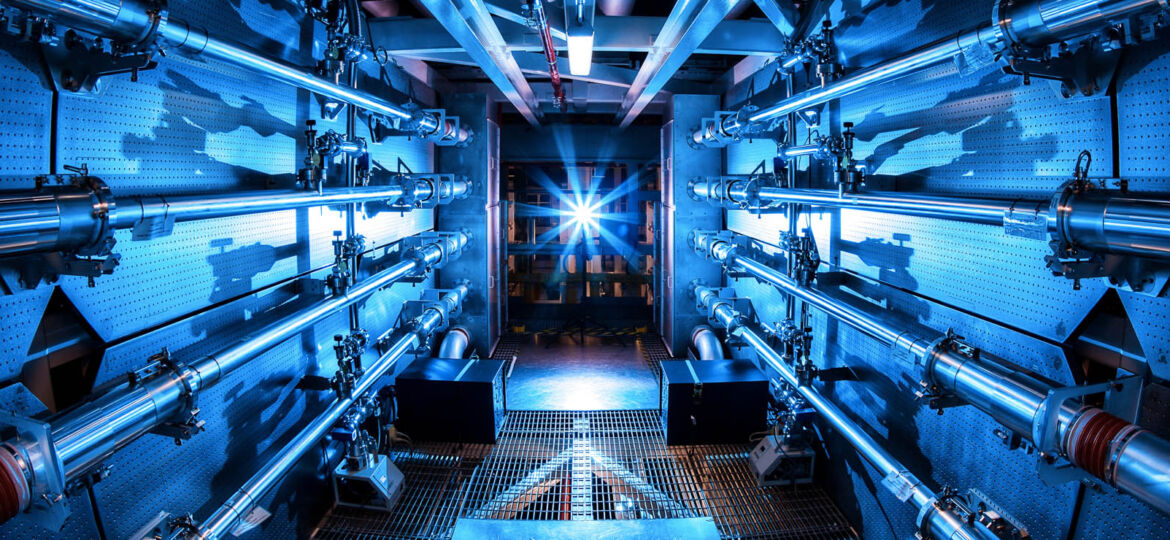
WHY THIS MATTERS IN BRIEF
Tokomak Energy aims to build mini-nuclear reactors and announces target of producing electricity by 2025 and feeding power into the grid by 2030.
Nuclear fusion needs a “Wright brothers” moment, to convince the world of its promise of unlimited clean and safe energy and so unlock significant private investment, according to a physicist whose says his company is closing in on that goal.
David Kingham, the chief executive of Tokamak Energy, has announced his company’s target of producing its first electricity by 2025 and feeding power into the grid by 2030, as well as investment from the UK’s Institution of Mechanical Engineers.
Harnessing the nuclear energy which powers the sun has long been touted as the ultimate solution to the challenge of powering the world while halting climate change. But, as fusion sceptics often say, the reality has stubbornly remained a decade or two away for many years.
“If we make exciting progress relatively quickly, with relatively modest funding then we’ll get to a Wright brothers’ moment in fusion and suddenly people will realise it is going to be possible,” said Kingham, whose company is a spin off from the UK’s national fusion lab at Culham near Oxford.
“That will unlock lots of investment around the world to solve some of the big challenges, like the lifetime of materials, that you don’t need to worry about at the moment but you do need to worry about if you are going into mass production.”
The company is up against North America-based companies backed by Amazon’s Jeff Bezos and Paul Allen, Microsoft’s co-founder, in the race to make a breakthrough.
Tokamak Energy’s aim is to develop a nuclear fusion device just a few metres wide which uses high-temperature superconductors to create the magnetic field to contain the fusion plasma, with small reactors mass produced later. In November, the UK government announced £250m in funding for small modular reactors, most of which currently focus on conventional nuclear fission.
Plasmas are well understood, meaning that containing the ultra-hot gas is the major obstacle. “It is essentially an engineering and technical challenge now,” said Kingham. Copper magnets and regular superconductors, which operate at near absolute zero, require too much energy. So Tokamak Energy is using high-temperature superconductors, though these still operate at -200C.
The plasma needed for fusion energy reaches an extraordinary temperature: 100mC, hotter than the core of the sun. But Tokamak Energy’s third prototype, currently under construction, aims to reach 15mC in the next 12 months and 100mC by the end of 2017.
The company is the world’s only private venture developing tokamaks, a Russian acronym for “toroidal chamber magnetic field”. Being private keeps the focus on the engineering, Kingham said, whereas the £1bn-a-year public programmes often focus on the science.
The biggest fusion project in the world is ITER, a collaboration of 35 nations aiming to build a huge fusion reactor in southern France, with magnets weighing about the same as a Boeing 747. It should complete construction in 15-20 years, and deliver 500MW of power, about the same as today’s large fission reactors. But it has been hampered, as you might expect from a project often described as the worlds “largest jigsaw puzzle,” by delays.
ITER in five minutes, a multinational project to change the world
Tokamak Energy is far from alone in backing small fusion reactors, with rivals including Lockheed Martin’s famous Skunk Works team, who in 2014 said they would produce a truck-sized fusion plant in a decade but attracted criticism for providing few details.
Others in the field include Tri Alpha Energy, which harnesses particle accelerator technology and is backed by Allen, General Fusion, which uses a vortex of molten lead and lithium to contain the plasma and is backed by Bezos, as well as Helion Energy, First Light Fusion and the University of Washington’s Dynomak.
“To a certain extent, we can learn from them and they can learn from us,” said Kingham. But he argues that the spheroidal magnetic tokamak his company is developing, based on work at the Culham lab, is closer to the scientific mainstream. “We are dealing with known unknowns, but perhaps others are dealing with unknown unknowns,” he said.
Tokamak Energy has convinced a range of bodies to back them with £15m of funding, including Oxford Instruments, the company that pioneered MRI scanning, and the state-backed Innovate UK. The company was also named a technology pioneer by the World Economic Forum in 2015, allowing them to forge links with major energy companies, while a paper by the company in Fusion Energy on small fusion reactors is the journal’s most downloaded paper.
The latest investor is the Institution of Mechanical Engineers. Dr Jenifer Baxter, head of energy and environment at the institution, said: “The institution’s Stephenson Fund was inspired by the original statement of purpose of the Institution, set out by founder George Stephenson in 1847, to ‘give an impulse to invention likely to be useful to the world’.”
“Small-scale nuclear fusion could revolutionise our future and is exactly the sort of technology Stephenson was referring to,” said Baxter. “If successful, the work of Tokamak Energy, could be the cornerstone technology to enabling sustainable economic growth in a world facing the twin challenges of climate change and growing world population.”

















[…] self-evolving, self-fabricating intelligent machines, never say never, and with powerful truck sized nuclear fusion reactors just over the horizon… well, maybe there’s your energy […]